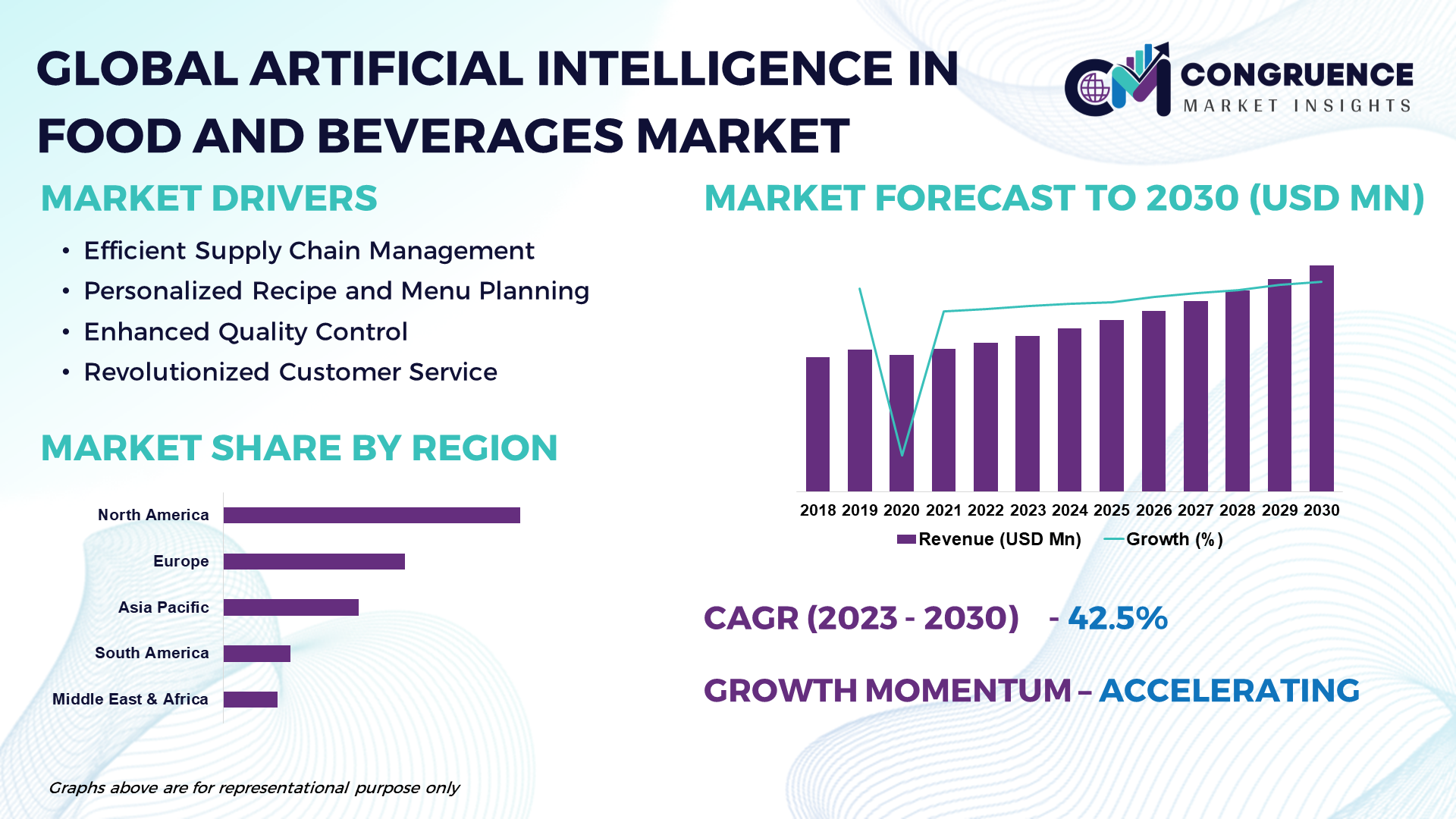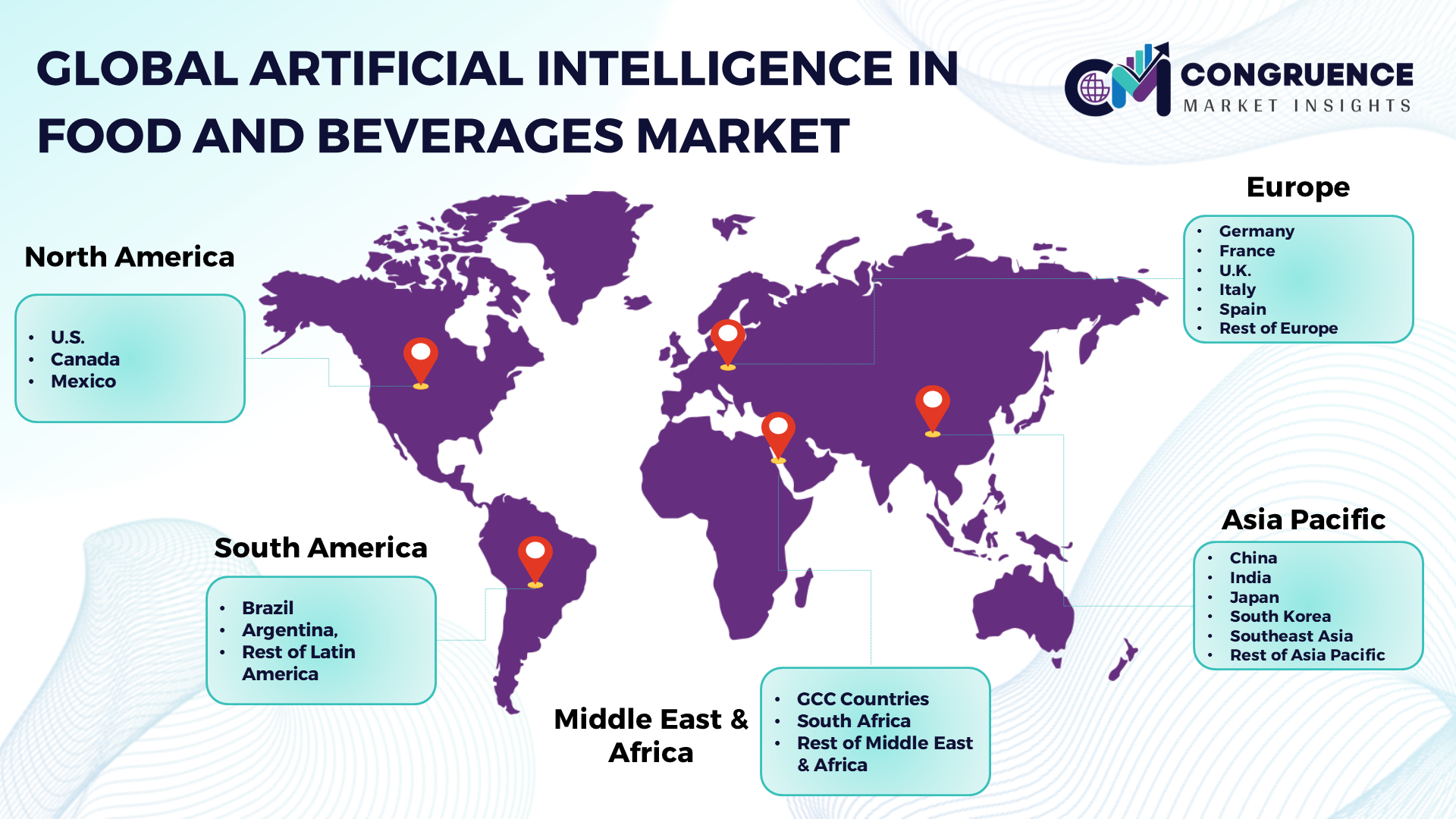Reports
The convergence of Artificial Intelligence (AI) with the food and beverages industry is reshaping the way businesses operate and consumers experience dining. The AI in Food and Beverages market leverages technologies like machine learning, natural language processing, and computer vision to optimize various aspects of the industry. From enhancing supply chain efficiency to revolutionizing customer service, AI is at the forefront of transforming the entire food and beverages ecosystem. This market's applications span across supply chain and logistics, recipe and menu planning, quality control, and customer service, benefiting diverse segments including food processing, restaurants, retail, and catering. With the AI in Food and Beverages market projected to surge at an impressive CAGR of 42.5% from 2023 to 2030, the industry anticipates unprecedented advancements in operational efficiency, personalized customer experiences, and innovative culinary practices.

Artificial Intelligence in Food and Beverages Market Major Driving Forces
Efficient Supply Chain Management: AI technologies streamline supply chain and logistics operations, optimizing inventory management, demand forecasting, and distribution efficiency for food and beverages businesses.
Personalized Recipe and Menu Planning: Machine learning and data analytics enable personalized recipe and menu recommendations, catering to individual preferences and dietary restrictions, enhancing customer satisfaction.
Enhanced Quality Control: AI applications in quality control involve real-time monitoring and analysis, ensuring consistent product quality, and reducing instances of defects or deviations in the food and beverages manufacturing process.
Revolutionized Customer Service: Natural Language Processing (NLP) powers AI-driven chatbots and virtual assistants, providing personalized customer service, taking orders, and offering recommendations in the food and beverages sector.
Artificial Intelligence in Food and Beverages Market Key Opportunities
AI-Enabled Culinary Innovation: The use of AI in creating innovative and personalized culinary experiences presents an opportunity for businesses to differentiate themselves, attract customers, and stay ahead of industry trends.
Retail Analytics for Consumer Insights: AI analytics can provide valuable insights into consumer behavior, preferences, and purchasing patterns, enabling retailers to optimize product offerings and marketing strategies.
Expansion of AI in Small Businesses: The adoption of AI in small and medium-sized food and beverages businesses offers growth opportunities, providing them with tools to enhance efficiency and compete with larger enterprises.
Artificial Intelligence in Food and Beverages Market Key Trends
· Automated Cooking Processes: The integration of AI-driven robotic systems and smart kitchen appliances automates cooking processes, reducing labor costs, and ensuring precision in food preparation.
· Blockchain for Food Traceability: AI combined with blockchain technology enhances transparency and traceability in the food supply chain, assuring consumers of the origin and quality of the products they consume.
· AI-Powered Flavor and Taste Profiling: The development of AI algorithms for flavor profiling enables the creation of personalized taste experiences, catering to individual preferences in food and beverage offerings.

Market Competition Landscape
The global AI in Food and Beverages market is characterized by intense competition among key players, with a focus on technological innovation and strategic partnerships. Companies are actively engaging in the development of advanced AI solutions tailored for the industry's unique needs. Notable players in the market include:
· IBM Corporation
· Google LLC
· Microsoft Corporation
· NVIDIA Corporation
· Bosch.IO (Bosch Group)
· ABB Ltd.
· SoftBank Robotics Group
· Yum! Brands, Inc.
· Innit Inc.
· Calorobotics
These companies employ a combination of organic and inorganic strategies to maintain a competitive edge in the dynamic AI in Food and Beverages market.
|
Report Attribute/Metric |
Details |
|
Base Year |
2022 |
|
Forecast Period |
2023 – 2030 |
|
Historical Data |
2018 to 2022 |
|
Forecast Unit |
Value (US$ Mn) |
|
Key Report Deliverable |
Revenue Forecast, Growth Trends, Market Dynamics, Segmental Overview, Regional and Country-wise Analysis, Competition Landscape |
|
Segments Covered |
· By Technology (Machine Learning, Natural Language Processing, Computer Vision) · By Application (Supply Chain and Logistics, Recipe and Menu Planning, Quality Control, Customer Service) · By End-use (Food Processing, Restaurants, Retail, Catering) · By Sales Channel (Direct Sales, Indirect Sales) |
|
Geographies Covered |
North America: U.S., Canada and Mexico Europe: Germany, France, U.K., Italy, Spain, and Rest of Europe Asia Pacific: China, India, Japan, South Korea, Southeast Asia, and Rest of Asia Pacific South America: Brazil, Argentina, and Rest of Latin America Middle East & Africa: GCC Countries, South Africa, and Rest of Middle East & Africa |
|
Key Players Analyzed |
IBM Corporation, Google LLC, Microsoft Corporation, NVIDIA Corporation, Bosch.IO (Bosch Group), ABB Ltd., SoftBank Robotics Group, Yum! Brands, Inc., Innit Inc., and Calorobotics. |
|
Customization & Pricing |
Available on Request (10% Customization is Free) |
